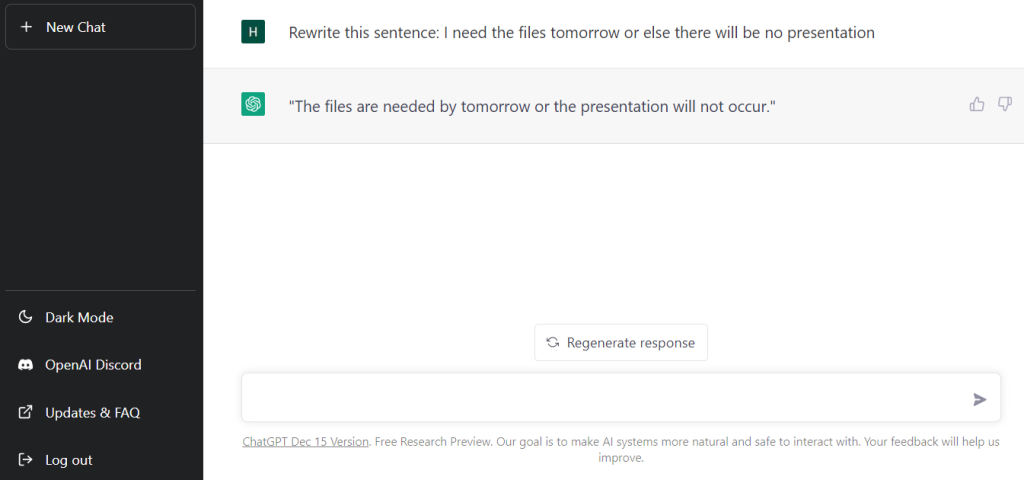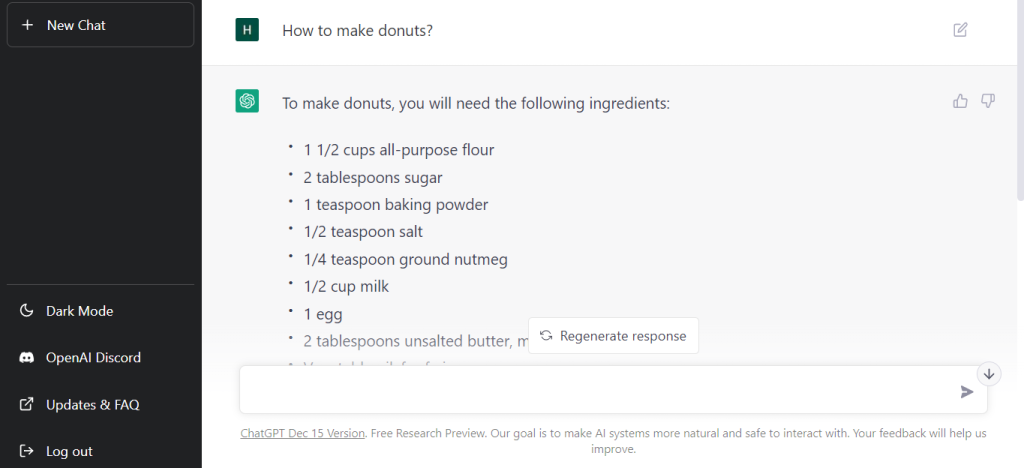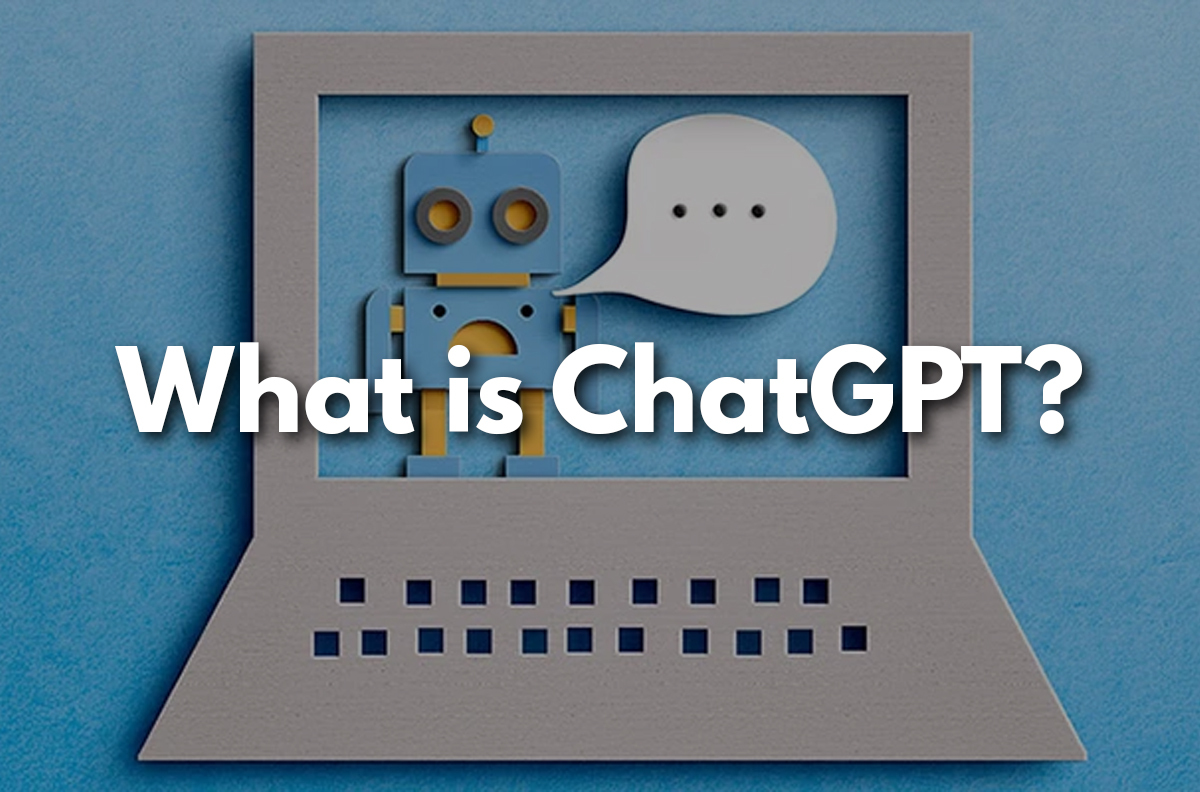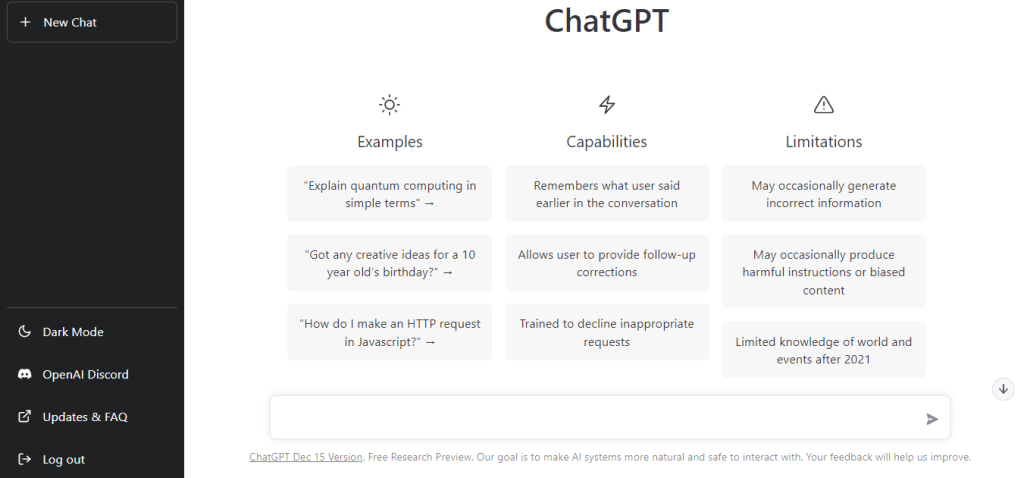ChatGPT is taking AI discussions to the next level.
So let’s get into it, what is ChatGPT?
This AI tool is so powerful that its capabilities defy conventional logic as some would say. Who could have imagined that you could chat with a seemingly normal bot and receive information in a conversational setup?
It has already accumulated a million users and is regarded as a useful tool. Others compare it to placing a query on a search engine.
So is ChatGPT a truly remarkable technological achievement? In this article, we’ll be going through what ChatGPT is all about.
Keep reading to get started…
Defining ChatGPT
ChatGPT is an artificial intelligence (AI) model that’s capable of providing users with solutions to their most pressing queries.
Developed by OpenAI, this revolutionary model can offer more than your typical automated responses – it can actually have conversations with you. It’s like having a real-life assistant at your fingertips, responding with solutions tailored to your questions. Apart from this, OpenAI’s blog states that ChatGPT can “answer followup questions, admit its mistakes, challenge incorrect premises, and reject inappropriate requests.”
Some argue that the future’s looking brighter than ever because ChatGPT has definitely got many things covered. But others are raising a few concerns about this new model, although we’ll be getting into that later on.
How Did OpenAI Get to This?
As mentioned on their ChatGPT blog, OpenAI utilised Reinforcement Learning from Human Feedback (RLHF) to train ChatGPT. The same methods used for InstructGPT are employed for ChatGPT but with some differences when it comes to the data collection setup. Furthermore, OpenAI states that an initial model was trained using human AI trainers wherein these trainers “…provided conversations in which they played both sides—the user and an AI assistant. We gave the trainers access to model-written suggestions to help them compose their responses.”
The thought of teaching machines conversational responses to sound like humans is thrilling and will surely result in some astounding outputs. With this, we all better keep an eye on OpenAI, who knows what other updates they’ll add to this revolutionary language model and AI tools that they can release in the future.
You can read more via this link where OpenAI discusses ChatGPT’s limitations such as biases in training data.
What ChatGPT Can Do
So what exactly can ChatGPT do?
Well, ChatGPT can wear multiple hats and provide insights and answers to one’s query and a follow up response to another question surrounding the initial query.
For instance, if you have a question about gardening and landscaping, ChatGPT will answer your question and if you have a follow up question after that it will continue to answer.
Need an answer about home repairs? ChatGPT has it.
Want to learn how to break dance? Believe it or not, ChatGPT is up for the challenge – just let it know and you’ll be whipped into shape in no time.
So throw your questions at ChatGPT – its virtual hat is always ready for another wear.
ChatGPT’s Ability to Debug Code
In the image above, the user asked a question on how to fix the code that has a problem. ChatGPT digs deeper into what the issue could be and in return, the user answers the questions that the AI tool is asking.
Here are a few examples that we’ve asked ChatGPT to respond to:
Question 1: Rewriting

ChatGPT provided a plausible sounding answer. You can imagine that if this were an email, ChatGPT would be helpful in coming up with a professional and well-crafted email.
Question 2: Recipes

We asked ChatGPT how to make doughnuts. Though our intent was a quick rundown of the process of how doughnuts are made, it provided us with a recipe that included the ingredients needed along with their exact measurements, as well as the steps in making doughnuts.
Question 3: Difference Between HTML and Javascript

As seen above, ChatGPT was able to briefly answer our question regarding the difference between HTML and Javascript.
From technical to simpler queries, ChatGPT can serve users with helpful answers. It’s the tech-savvy sidekick for anyone in need of help. In a flash, you can get answers to everything from the quick queries to the trickiest of tech questions.
However, it is worth noting that the model doesn’t always produce correct answers despite how great they sound. This leads us to the next aspect that needs to be considered when it comes to this AI tool.
Ethical Concerns and Other Issues
With the rapid development of artificial intelligence, people are increasingly concerned about the negative impact of AI on their lives, particularly ChatGPT. The following are just some of the issues that circulate this tool.
Job Loss Due to AI’s Takeover
The emergence of ChatGPT and other AI tools has raised questions about potential job loss due to the automation of tasks. Some have already accepted that AI will replace certain jobs, as it can do many tasks more quickly and accurately than humans can.
While this could increase productivity, it could also lead to unemployment, as many jobs that involve manual labour can be switched to automation.
Hateful Content
The potential of ChatGPT to write hateful content is a grave concern and one that must be addressed. Although OpenAI has been working on this from being generated, users have found ways to work with the chatbot in a way that it will come up with a negative response.
As the development of AI progresses, it is essential to ensure that ethical standards and regulations are implemented in order to prevent ChatGPT or other chatbot technology from propagating hateful content. This will help guarantee that AI is used for good and not for harm.
Reliability Over Research
ChatGPT has proven to be an important tool for individuals who need quick access to information, but users should proceed with caution when it comes to the reliability of this AI tool. Right off the bat, it cannot replace Google. Here’s why.
While ChatGPT can provide helpful and accurate answers, there is also the possibility that it could provide wrong answers, where individuals may simply believe what ChatGPT provides without fact-checking. Similar to doing a quick peek at Google’s search results for a question without reading the whole context of each search result.
With this, others perceive ChatGPT to be a dangerously strong AI, as misinformation can easily appear to be credible answers. Not to mention that the dialogue format makes it easy for users to get in the loop of feeling that ChatGPT provided an ideal answer.
To combat this, it is important that individuals are educated on the topic and should double-check the answers provided before taking any information at face value. This includes making sure to research and verify the accuracy of what ChatGPT is providing, rather than simply believing what it says.
Although OpenAI does work hard to ensure proper measures are in place, it’s still best to be thorough in knowing whether or not the outputs produced by ChatGPT are legitimate.
Conclusion
ChatGPT has got users covered, no matter how simple or mind-boggling their queries may be.
We believe that ChatGPT is like a convenient specialist in your pocket. Need help with something technical? It can assist you without breaking a sweat. Need a solution to a simpler issue? You’d be provided with answers quickly. And if in case it doesn’t exactly give you a correct answer, it can at least point users in the right direction. Just remember to check whether the answers it provides are true and reliable.
All in all, we hope to see more developments on ChatGPT to further reject inappropriate requests and reduce nonsensical answers so that it may truly be credible and ethically used.
Thanks for reading!




